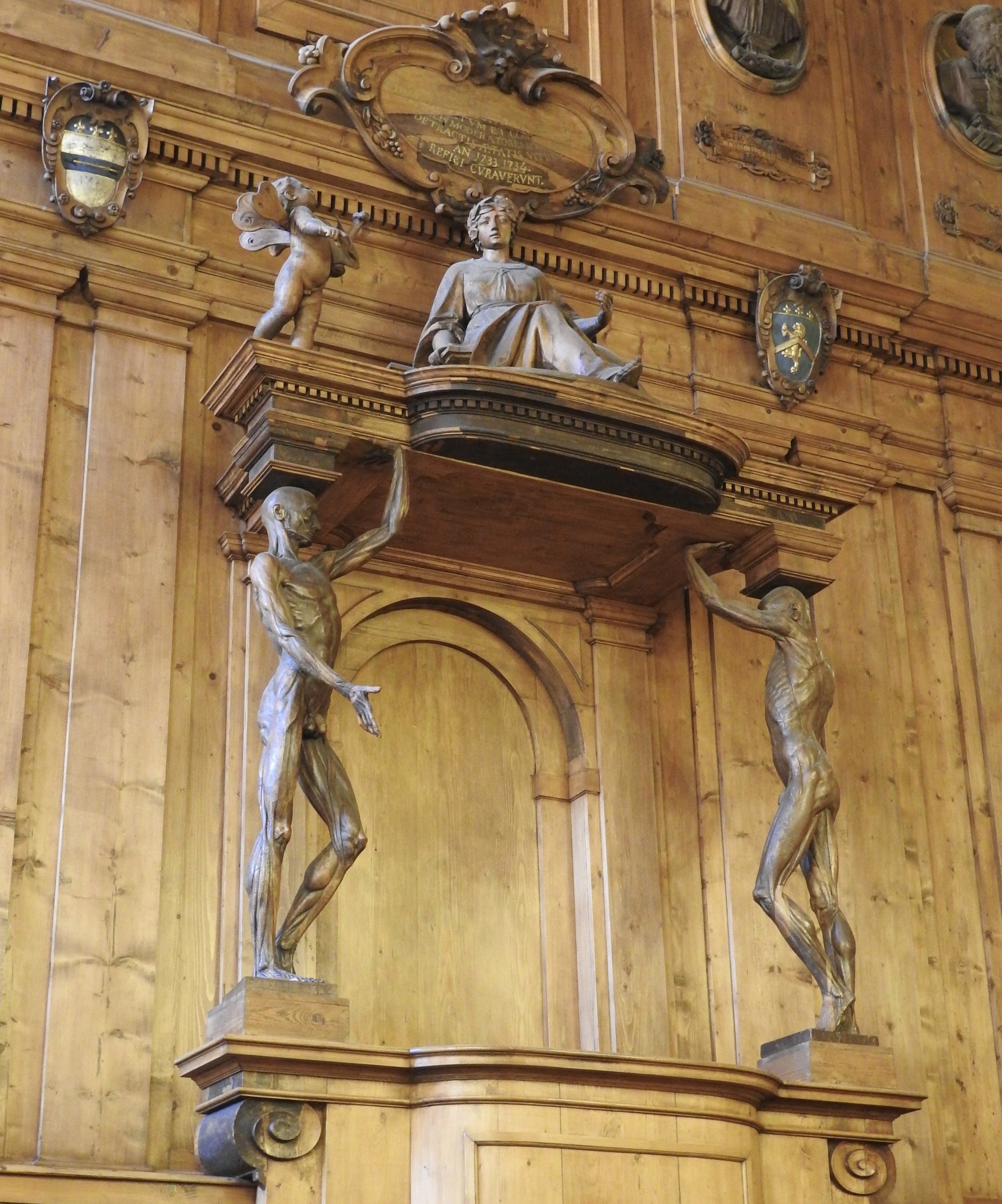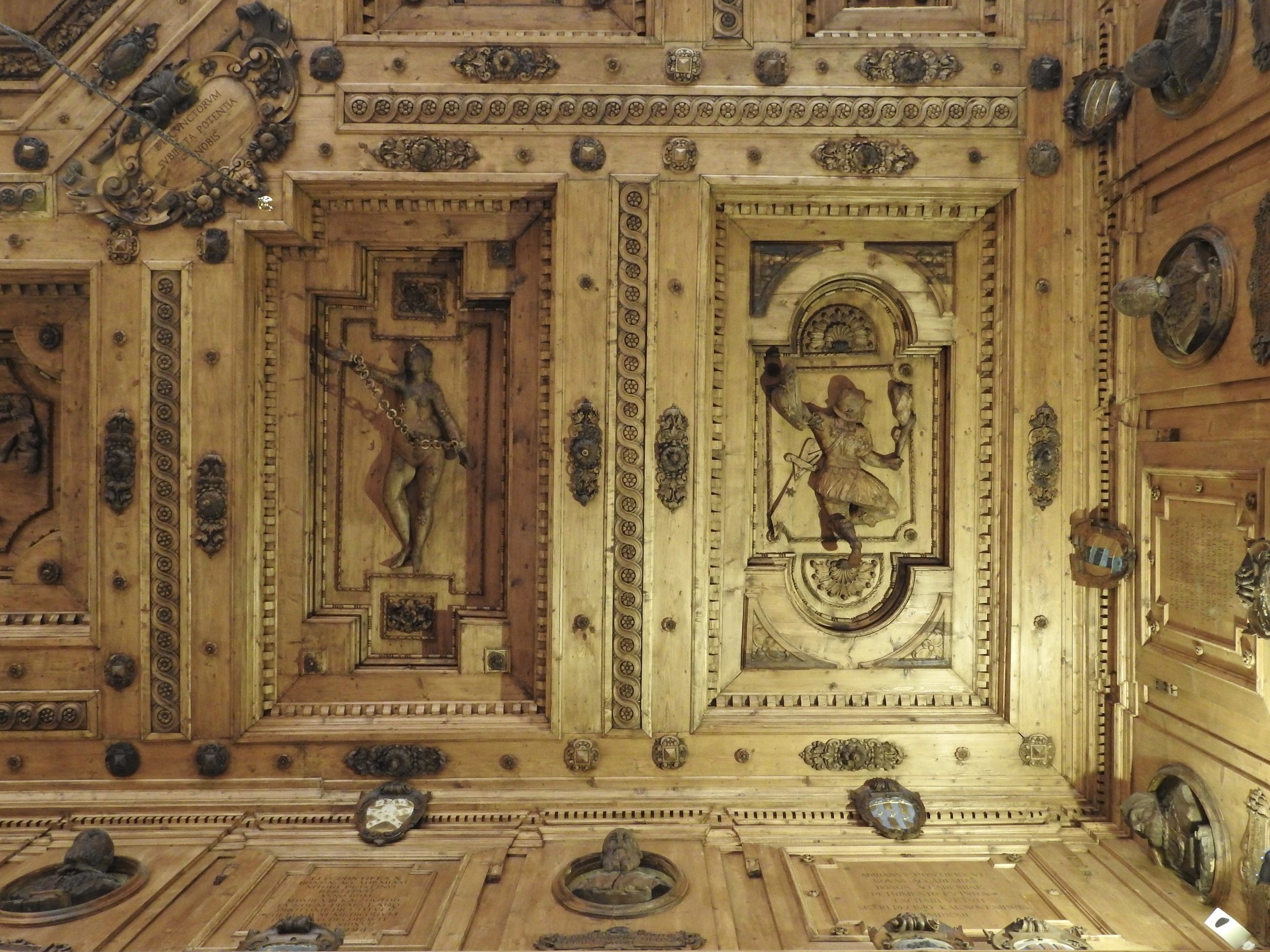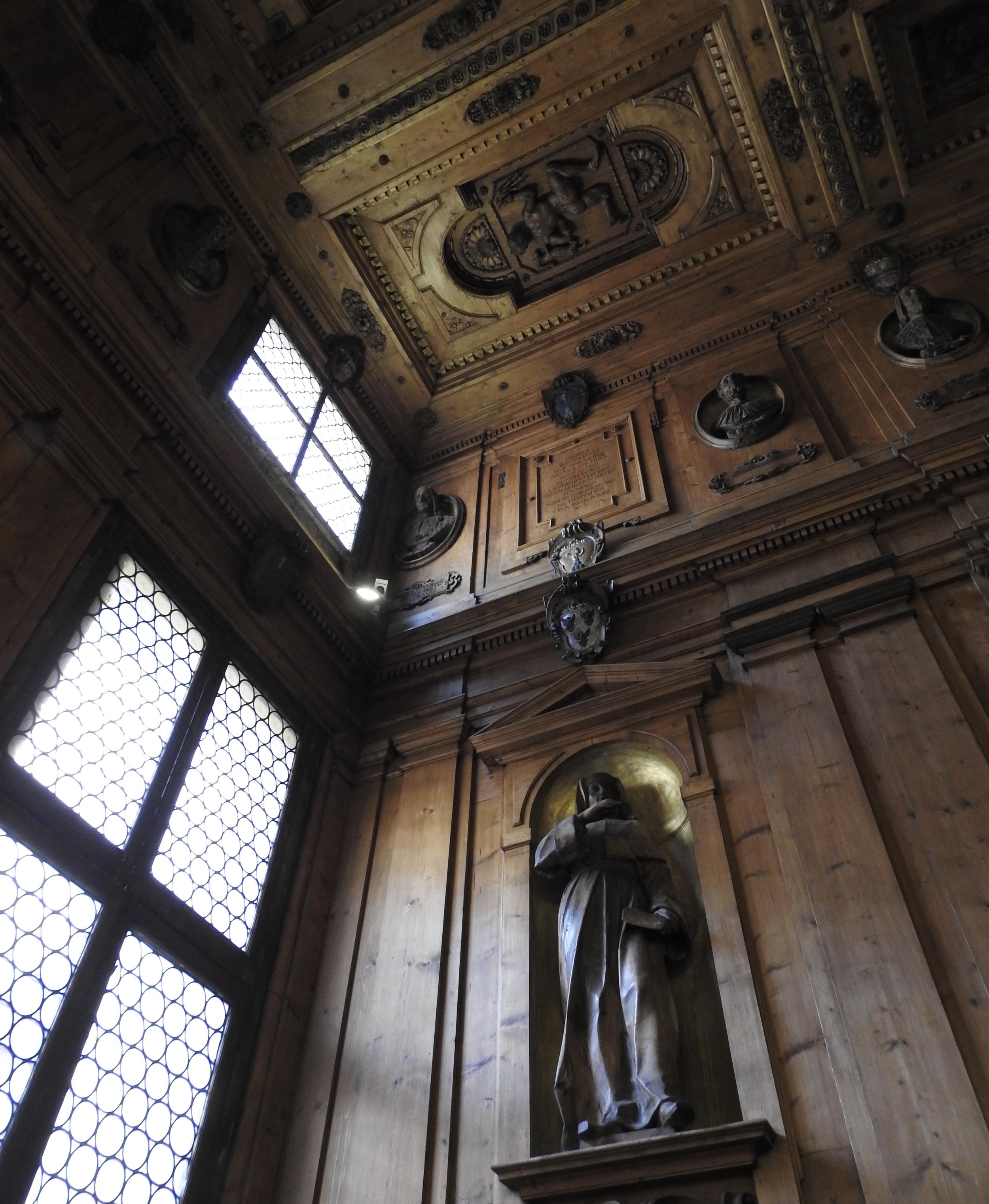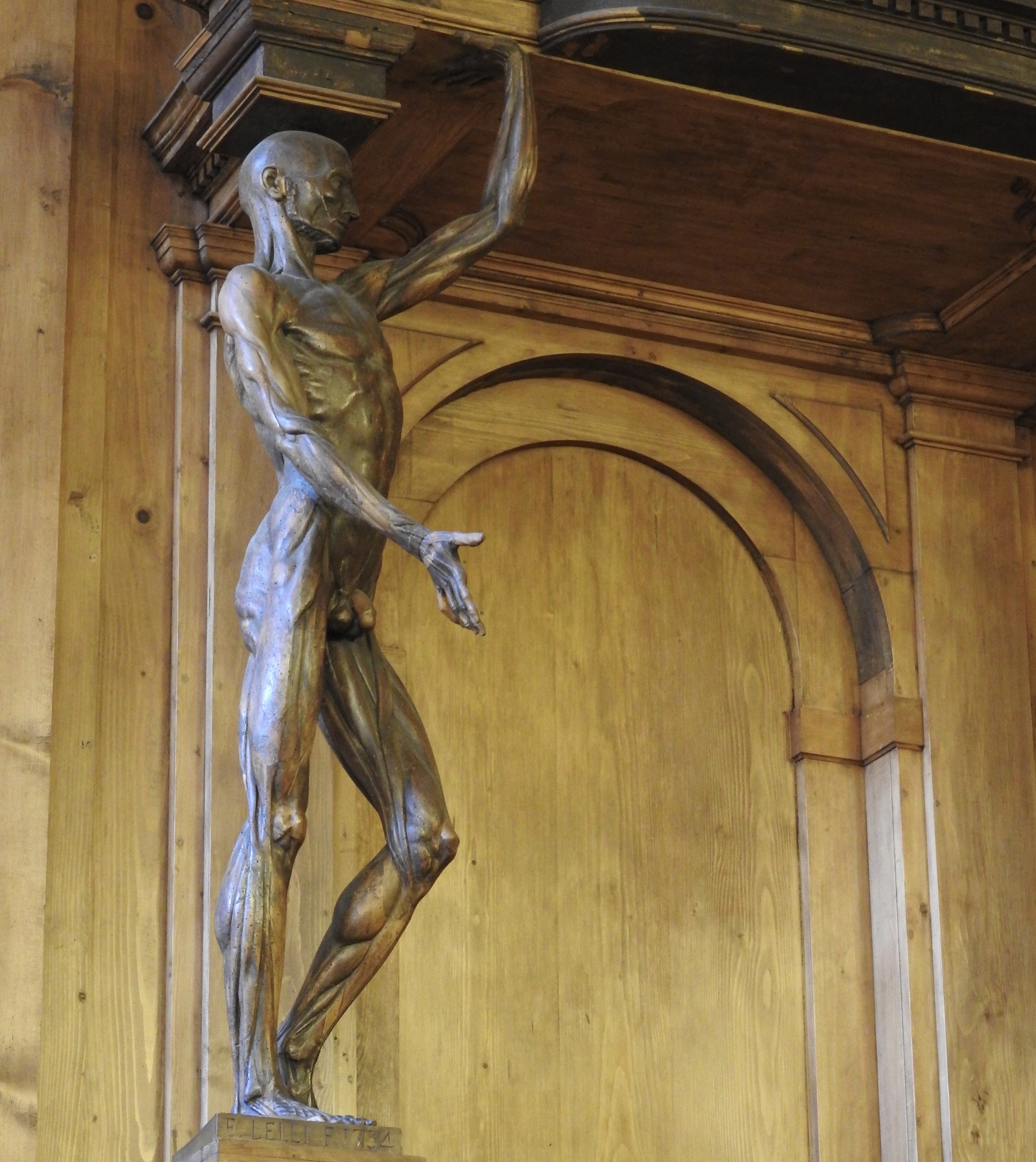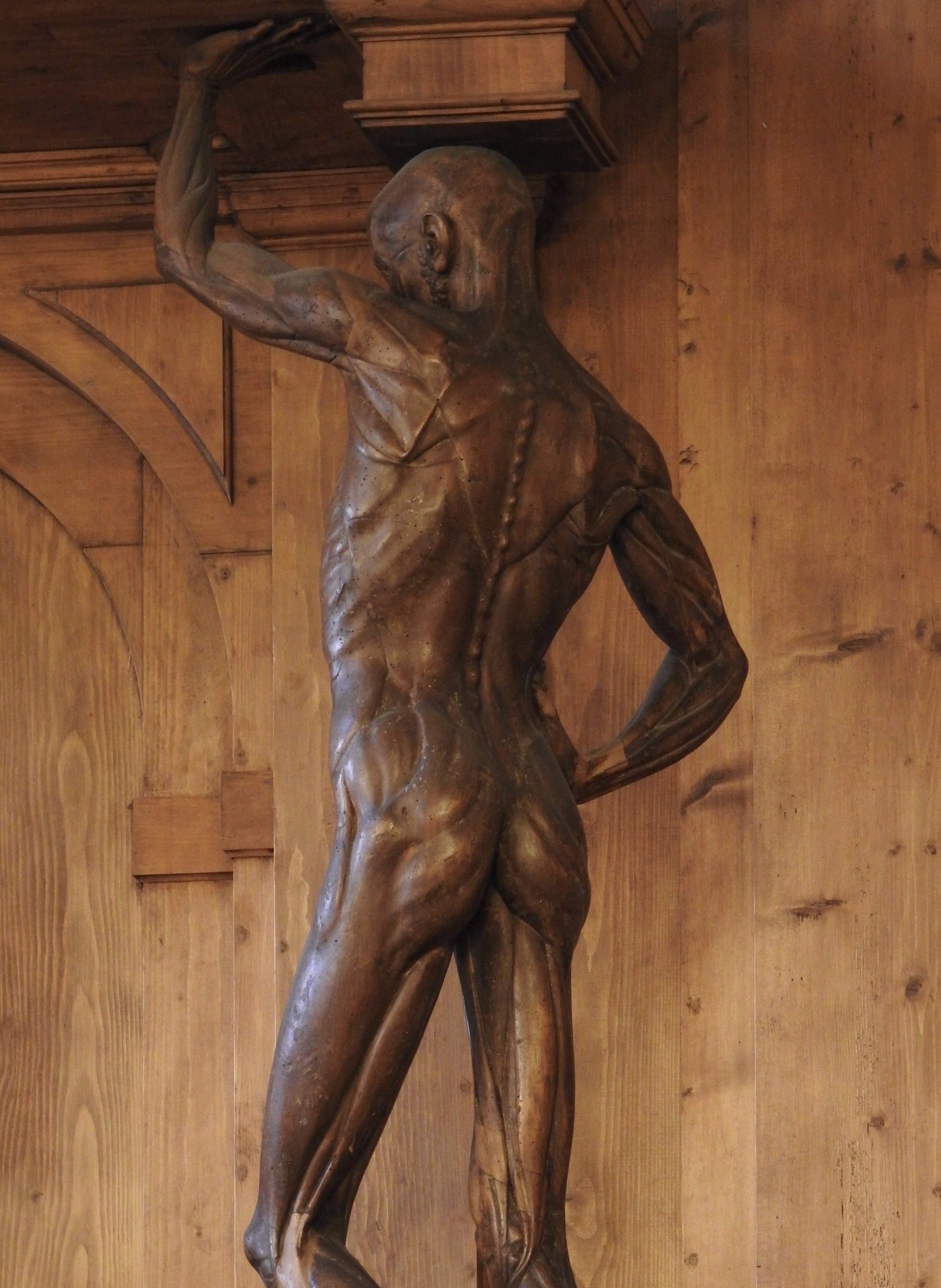Built between 1562–63 to house Bologna’s university, the Archiginnasio Palace is now home to the Communal Library and historic Anatomical Theater, as well as the world’s “largest existing wall heraldic complex.” A single ticket grants visitors access to the theater and specific sections of the library, both on the upper floor. Highlights include entrance into the richly decorated and book-lined Stabat Mater room as well as a peek into the classrooms-turned-library-storage Historic Halls.
For more historical and visitor information on the Archiginnasio, see the Biblioteca comunale website.










